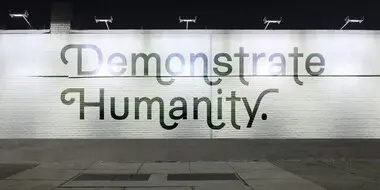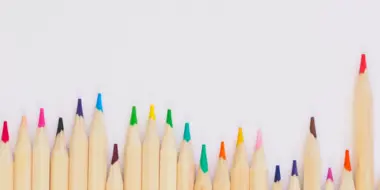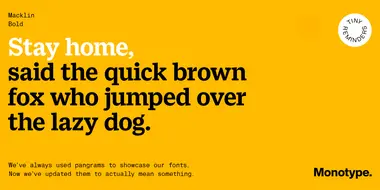How design and creativity can help meet this moment.

COVID-19 is aggressively reshaping the way we work and live, right before our eyes. There is a distinct before and after to this crisis, with the “before” rapidly fading from view while the “after” remains shrouded in uncertainty.
When we do eventually emerge from the worst of it, it’s anyone’s guess how much things will have changed. Will people keep the new habits they formed during these months of lockdown? How do brands identify and shape the new opportunities that will inevitably emerge? What do your teams need to be successful and safe?
Perhaps the biggest challenge, then, is not figuring out how to return to whatever “normal” used to look like, but how to let go of the vision we held for the future we thought we’d have. We can’t predict what will happen, we can prepare for what could happen. Here’s where to start.
Accelerate the inevitable.
Even though mobile apps, ecommerce, streaming services, and other digital channels have become commonplace, there are plenty of brands that approach digital transformation gradually. While they acknowledge that, yes, our future is digital, they’re content to let their customers dictate the pace of that change and determine the value of investing in online channels.
That future is, suddenly, now. COVID-19 has accelerated the inevitable. The lockdown has forced everyone online, and the numbers are staggering: U.S. retailers’ online revenue has spiked by 68% year-over-year in 2020. Streaming consumption is up 85%. Online video game usage jumped 75% in the first week of lockdowns.
For brands making this leap, the task can seem overwhelming. There may be pressure to figure out something to hold down the fort until better days arrive. But again, we don’t know when those better days will be here, or what they’ll look like. So it’s worthwhile to think a bit bigger.
In its 2020 Disruptor Playbook, frog design sets the stakes: “Today more than ever, experience is brand, brand is experience. The brands that could not continue to offer experiences amid the new restrictions from our current healthcare crisis cease to exist in consumers’ minds. But those who are able to show up in new and inventive ways are able to reset customer expectations for how every other brand in that category should interact with and relate to their customers.”
Every brand is in a different situation, and no one can tell you what the right experience is except your customers. But one universal truth is the importance of a unique, unified visual identity. When it comes to the brand-customer relationship, continuity is a major source of trust. Whatever new service, experience, or product you roll out, your fonts, colors, and imagery form an essential throughline that keeps your customers connected to your brand and grounded in your experience. They also help you stand out from the digital noise as more and more brands take their services online.
frog design 2020 Disruptor Playbook.
If you need to launch a new app to scale up a new curbside pickup service, for example, that visual continuity signals to your customers that you’ve put thought and care into the project. It reassures them they’ll receive the same level of quality and service they expect from your existing experience. And it lets them know it’s really you and not a scam. In a time of who-knows-what-will-happen-next, a little bit of trust can go a long way.
Engage in humanity.
COVID-19 is a global crisis comprising millions of individual experiences. But while each experience is different, it’s safe to say we’ve all shared a loss of connection. Brands cannot replace those connections or take the place of friends or family members, but it’s important to remember that, ultimately, this is a human crisis that demands a human response.
Brands and their customers are in a partnership of sorts. Both are adapting to a new and, in some respects, possibly permanent way of life. Customers are trying to figure out how to get the things they need and want, whether it’s toilet paper or gardening supplies or a nice meal. Brands are figuring out how to get those things to their customers while delivering the best experience possible.
You might call this something like symbiotic adaptation, a shared process of trial-and-error that amounts to, simply, people solving problems together. For small businesses, this literally involves people finding creative ways to help their customers, such as cheese shops offering “remote mongering” or hair stylists advising homebound haircuts via Zoom. Even solar panels are being sold online.
For bigger brands, humanity is expressed in less intimate ways, but that doesn’t mean the message can’t be personal, transparent and empathetic. This all comes down to delivering timely, on-brand communication—and not just about the “good news.” Let’s be realistic: All brands are going to stumble as they seek a stable foothold in this situation. Even brands like Amazon have struggled with disrupted supply chains, delayed shipping, and a surge in volume. But customers get it and most will forgive the missteps. Keeping customers in the loop can build trust that lasts beyond the crisis.
“Within every crisis lies an opportunity to shape what your organization will become, and how it will be perceived as it emerges from such a challenging time,” Jenna Garden wrote in a recent piece for Fast Company. “In the aftermath of a crisis, the spotlight will dim, and people’s attention will shift. Nonetheless, they will remember how an organization responded during the crisis, and that response will shape its reputation well into the future.”
Enable your creatives.
None of this is possible without a creative team firing on all cylinders. Which is difficult to achieve when your entire organization is abruptly sent home to work remotely for an indefinite period of time, and oh yeah, many of those people have kids who aren’t in school.
For companies that made or were making the transition to a remote-friendly workplace, this sudden shift was probably manageable. At Monotype, for example, we’ve had teams and individuals working remotely across the globe for years. But even though we have numerous cloud-based systems in place to connect those teams, it still took time and a good deal of problem solving to scale up those systems for the entire company. For organizations that hadn’t begun this transition, the shift was likely a shock.
While remote work presents challenges for all teams and departments, creative teams are among the most affected. Creative collaboration is essential for brands looking to maintain brand consistency while evolving on the fly. Designers need to be in sync, sharing ideas, drafts, feedback, brand assets like fonts.
The interpersonal aspects of collaboration are easier to solve with video conferencing, Slack, email, and old-fashioned phone calls. Sharing assets and files is a different story. Many brands still store assets like fonts on local servers or even individual team members’ computers, which creates a major challenge when teams can’t access them. Cloud-based asset management, like our Monotype Fonts solution, provides a central management system teams can access from anywhere, anytime. Coupled with cloud-based design programs, this allows your creative teams to work unimpeded through the pandemic.
But don’t stop there. It’s probably best not to think of these circumstances as temporary, but instead as a chance (and perhaps your best chance) to adapt for the longer-term. Many people are working from home for the first time and—surprise!—they like it, even with all the stress, uncertainty, and restrictions imposed by the pandemic. Going back to the office, the commute, and the time away from family might be a tough sell after months of developing new habits. So as with everything else disrupted by COVID, this is less a momentary detour from the status quo than a shift to a new, permanent way of working and collaborating.
So again, perhaps the biggest challenge in all of this is letting go. The “before” is not coming back, even if no one can say exactly what will take its place. But there is a path forward, and brands willing to accept some uncertainty can lay the foundation for whatever adaptation the future requires.














